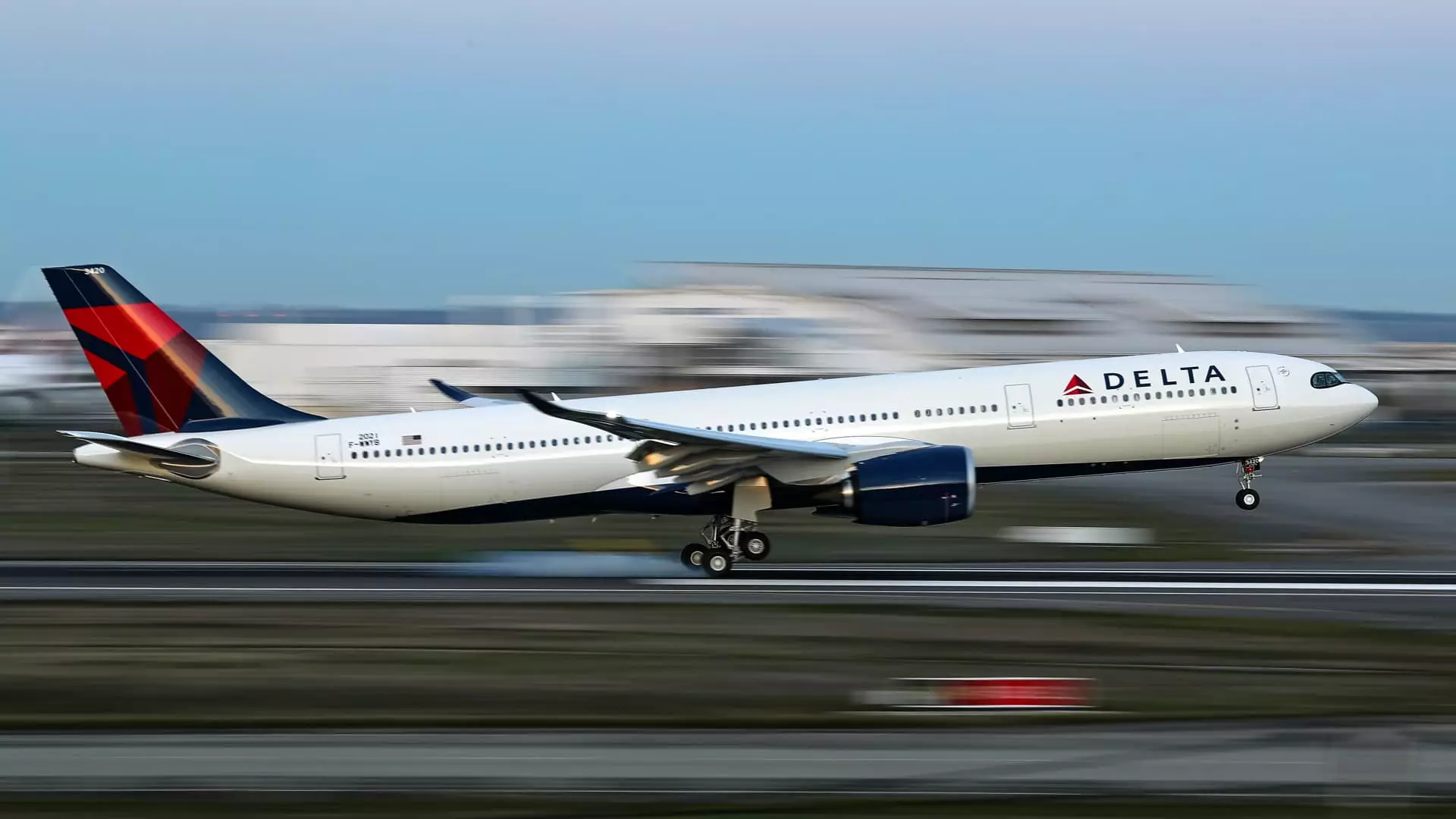In recent years, airline executives have increasingly prioritized their premium cabins, not necessarily to serve customer needs better, but to bolster profits in a competitive landscape that is fundamentally changing. Delta Air Lines exemplifies this trend by actively exploring modifications to its high-end fare offerings, aiming to capitalize on the unwavering demand for luxury in air travel. While this pursuit might seem justified on paper, it raises profound questions about the integrity of service, the genuine value to consumers, and the long-term sustainability of such strategies.
What’s striking is the emphasis on revenue figures that suggest premium cabins are now the backbone of profitability. Delta’s reported 6% increase in revenue from business class seats in the first half of the year signals a lucrative niche for carriers. Meanwhile, traditional economy fares—once the mainstay—are seeing a decline. This could be interpreted as a natural evolution of markets longing for comfort and exclusivity, or as a gamed approach where airlines artificially inflate prices for increasingly limited, premium offerings. The core issue lies in whether these premium experiences genuinely cater to traveler needs or merely serve as an inflated commodity, designed more for profit than passenger satisfaction.
The Illusion of Innovation and Customer-Centric Design
Despite the buzz about “segmentation” and improved services, the core premise reveals troubling ambiguities. Delta’s leadership insists their current focus is on aligning their premium offerings with distinct customer segments—yet, behind this rhetoric is a stark reality: airlines are heavily invested in presenting luxury as a premium product that justifies higher prices, rather than truly understanding what travelers need. The ongoing testing of new fare types in luxury cabins hints at a market driven less by authentic customer insight and more by revenue optimization strategies.
The potential introduction of stripped-down premium seats—more affordable without the usual perks—may sound like a thoughtful solution, but it risks cheapening the overall experience and further commodifying air travel. It is ironic that a sector that often touts “luxury” now contemplates offering a version of premium cabins that might lack lounge access, seat upgrades, or other amenities that justify their inflated prices. Such shifts threaten to erode the very value propositions that have historically justified premium fare premiums, risking an erosion of trust. Moreover, by surveying travelers, airlines are playing a delicate balancing act—seeking feedback to validate their plans while possibly prioritizing profit margins over authentic customer needs.
Luxury as a Strategic Tool, Not a Passenger Priority
The strategic overhaul of premium cabins is more symptomatic of an industry obsessed with maximizing revenue than providing meaningful value. The moves to upgrade or redesign cabins, like Virgin Atlantic’s “Retreat Suite” or United’s efforts to reimagine Polaris, reflect a recognition that luxury still sells—yet they also point to a fundamental issue: the notion of “luxury” is increasingly manipulated to serve financial ends rather than genuine comfort.
For the center-wing liberal observer, these developments underscore a more critical perspective: the insurance of profitability often comes at the cost of genuine consumer advocacy. Airlines are increasingly viewing their premium cabins as a battleground for market share—each new innovation or upgrade is less about the passenger experience and more about creating a perceived status that justifies hefty costs. The persistent cycle of updating “state-of-the-art” amenities merely prolongs the illusion of luxury—one that is more a façade for profit-centric practices than a true reflection of passenger care.
Furthermore, the idea that airlines are willing to offer “more segmentation” in their premium cabins serves as a reminder of how market stratification is morphing into a tool for class differentiation—segmenting luxury into tiers that may ultimately fragment customer loyalty and deepen disparities. Airlines might tout this as innovation, but from a broader societal perspective, it appears as a commodification of an experience that was once more universally accessible, now guarded jealously for those who can afford it.
A Cautionary Outlook on the Future of Premium Air Travel
Ultimately, the push for enhanced premium cabins signals a complex future—one where the focus on luxury and profitability might overshadow the fundamental obligation to serve the broader traveler community fairly. By continuously refining their products—not necessarily to meet real needs but to capitalize on perceived demand—airlines risk alienating a significant portion of their customer base.
This pervasive shift toward offering a “better” experience for the affluent, while potentially sacrificing the shared ethos of travel as a democratizing force, warrants vigorous scrutiny. As airline executives chase after innovation and higher margins, travelers must remain skeptical about the true value of these “improved” premium cabins. The pursuit of sophistication risks transforming flight from a shared journey into an exclusive club, leaving many behind in a complicated landscape driven more by market mechanics than honest service.

